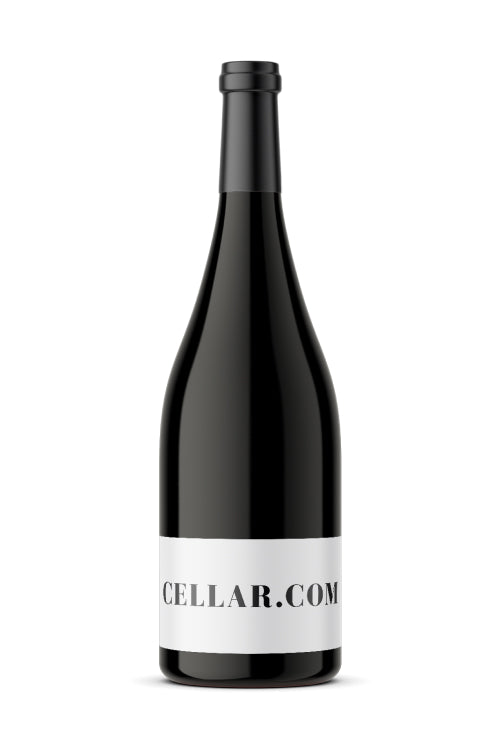1
/
of
1
Ibizkus Tierra Ibiza Monastrell - 2019 (750ml)
Ibizkus Tierra Ibiza Monastrell - 2019 (750ml)
Regular price
$39.99
Sale price
$39.99
Regular price
$44.99
Unit price
/
per
Availability:
2 In Stock
$25 Shipping on Orders +$299
Couldn't load pickup availability
Share :

- varietal
- Region
- Sub - Region
- Type
- Reviews
Mourvedre (Monastrell in its native Spain, Mataro in Australia and California) is a black-skinned variety that has been grown in vineyards all around the western Mediterranean for centuries. Thought to have originated in Spain, it is now grown extensively throughout the Iberian Peninsula, southern France, California and South Australia. Mourvedre likes warm, dry climates and has small, thick-skinned berries â?? the textbook combination for making wines with intense color and high tannin levels. In fact, it is the variety's mouth-drying tannins that earned it the French nickname Etrangle-Chien (the dog strangler).
The Balearic Islands (Las Islas Baleares) collectively form one of Spain's 17 official administrative regions. This idyllic archipelago sits approximately 60 miles (95km) to the east of the Iberian Peninsula in the western Mediterranean Sea. The islands' nearest neighbors are the provinces of Valencia and Murcia to the west, and Catalonia to the north. The four largest islands (Majorca, Menorca, Ibiza and Formentera) are well known as archetypal Mediterranean holiday destinations. Although wine has been produced on the islands since Roman times (vines were introduced around 121 BC), the industry here is still evolving. The islands have two official DO wine titles: Pla i Llevant (introduced in 2001) and Binissalem-Mallorca, both of which are on the island of Majorca. The latter was the islands' first DO title, and the first ever granted outside the Spanish mainland. Although there are just two DO's, a number of VT-classified zones are spread across the other islands including Ibiza VT, Formentera VT, Isla de Menorca VT, Mallorca VT and the encompassing Illes Balears VT. It was sweet Malmsey wine (see Malvasia) that first put the Balearic Islands' wines in demand, particularly from England, the Netherlands and Germany. This wine style all but disappeared in the late 19th Century with the arrival of phylloxera, which devastated the local vine population. Several native varieties never recovered form this attack, but local varieties Manto Negro, Callet, Fogoneu and Moll (Prensal Blanc) are still in use today. They are complemented by ever-more fashionable French varieties including Cabernet Sauvignon, Merlot and Chardonnay, which have brought broader appeal to wines from the Balearics, as has Spain's very own Tempranillo. Currently, most Balearic wines are made in fresh, aromatic styles designed for early consumption. A handful of producers also make serious, critically well-received red wines although their reputation is mostly confined to Spain itself. Aside from wine, some liqueurs and spirits are also produced on the islands, including Absinthe and Gin. There is even a local brewery, supplying beer to a reliable flow of tourists.
Ibiza VT is a Vino de la Tierra title used since 2003 on the Spanish island of of the same name (called Eivissa in the native Catalan language). The island forms the western-most edge of the Balearic archipelago, approximately 80 kilometers (50 miles) off the Iberian Peninsula. White, red and ros?? wines can all be produced under the Ibiza / Eivissa VT. Macabeo, Parellada, Malvasia, Chardonnay and Moscatel (Muscat) make up the list of white wine grape varieties. The best white wines are Macabeo-dominant, with apple and floral notes and a freshness on the palate. They must contain a minimum of 11 percent alcohol. Monastrell, Tempranillo (known locally as Ull de Llebre), Cabernet Sauvignon, Merlot and Syrah are the only authorized red grape varieties. Monastrell (France's Mourv?¨dre) produces distinctive examples here, exhibiting ripe strawberry and red-fruit flavors. Red wines from the island seem to show hints of thyme, which was traditionally used to stop vats from blocking up but which now seems to affect the aromas derived from the grapes. Today Ibiza is perhaps best known for its nightlife, tourist trade and idyllic Mediterranean beaches, but the Balearic Islands to which it belongs have a rich history of winemaking. The Phoenicians are thought to have brought viticulture to the island around the 7th Century BC. During this period it is thought that much of the wine consumed in the region now known as Valencia was produced on Eivissa / Ibiza. The Phoenicians were skilled vinegrowers and winemakers and some historians have credited them with introducing vines to nearby mainland areas as well.
Red wine is wine made from dark-coloured grape varieties. The color of red differs based on the grapes variety or varieties used.Interestingly, black grapes yield a juice that is greenish-white. The actual red color comes from anthocyan pigments (also called anthocyanins) from the skin of the grape (exceptions are the relatively uncommon teinturier varieties, which produce a red colored juice). Most of the production centers around the extraction of color and flavor from the grape skin.


